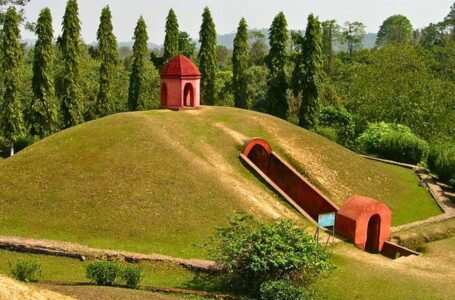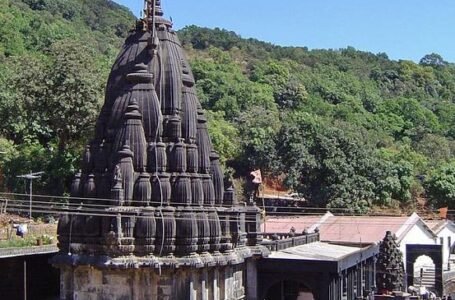Cave Architecture – The Unrecognized Art of Ancient India
- Ancient history Asian history Medieval history
 historified
historified- November 28, 2022
- 0
- 529
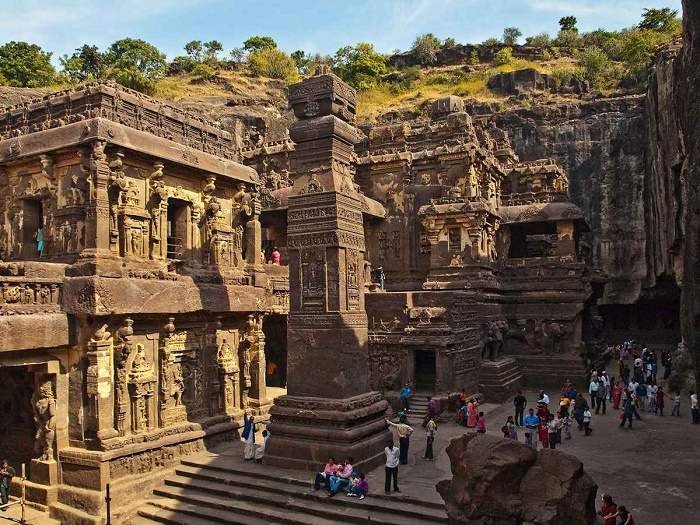
The evolution of cave architecture is a unique characteristic that denotes a significant period in Indian architectural history. The second century BC and the ninth century AD saw the excavation of more than a thousand caverns. Among these were the well-known Ajanta and Ellora caves in Maharashtra and the Udaygiri cave in Orissa. These caverns house Hindu deity and goddess temples with pillars, Buddhist viharas, chaityas, mandapas, and more.
Since the beginning of time, Indians have held caves in the highest respect. The first caves were those found naturally, which the locals of such regions utilised as shelters and places of worship for a variety of purposes.

In order to live a monastic life in line with the aesthetic character of Buddhism, Buddhist missionaries were able to use natural caverns as Varshavasa, or places to stay during the rainy season. They also used these caves as temples.
Western India is where the caves were found. The Mauryans are recognised as being the masters of the building of caves. They are acknowledged as the creators of the first rock-cut cave architecture. These caves have been used and modified since the Mesolithic period, according to data-supported facts (6000 BC). Early instances of human workmanship in architectural design may be seen on such buildings as the patterns etched into overhanging rocks.

Because enormous rocks are more durable than other building materials, like wood, caves that have been carved out of them through time have become more elaborate and richer in architectural detail. Caves were first dug up in the western Deccan area. The area is home to ancient cave structures, mostly Buddhist shrines and monasteries, dating from about 100 BC and 170 AD.
The state of Maharashtra in India is home to some of the earliest cave temples that exhibit cave architecture, such as the Bhaja Caves from 200 BC, the Bedse or Bedsa Caves from 100 BC, the Karla or Karle Caves from 100 BC to the 500 AD, the Kanheri Caves from 100 BCE to the tenth century CE, and some of the Ajanta Caves from 200 BCE to roughly 480 CE.
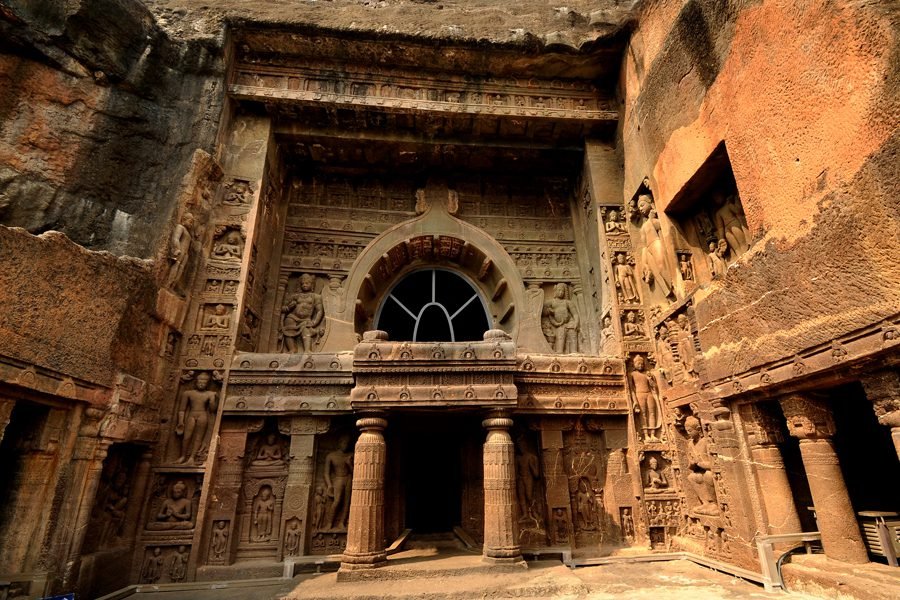
More than 200 caverns have been dug surrounding the town’s hills in Junnar, but just 108 caves have been discovered in Kanheri, Mumbai. The most significant landmarks are those at Ajanta, Pitalkhora, Ellora, Nashik, Bhaja, Junnar, Karla, and Kanheri. Ajanta, Ellora, and Kanheri are still thriving. With the discovery of the Konkan Maurya inscription, it is now satisfactorily proven that the caving activity in western Deccan was an ongoing process and many caves had been carved with Buddha images where the image does not yet exist. Previously, it was assumed that because the Buddha image was absent, the caves were considered to belong to the orthodox faith of Buddhism, i.e., the Thervadins. Also worth mentioning is the prevalence of modern Hindu shrines that have been built inside caves, which are used by many people as places of worship.
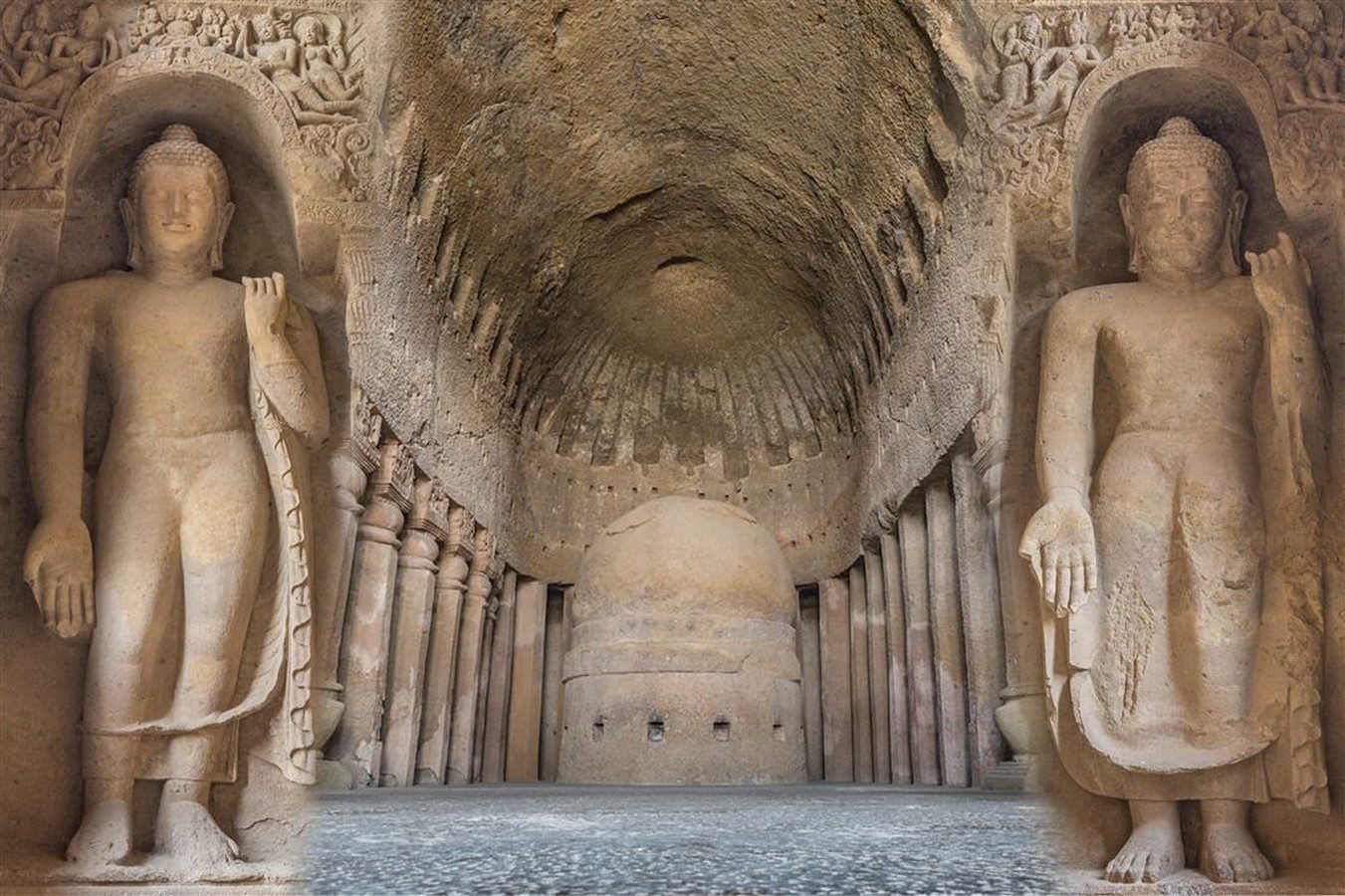
The three main faiths practised in India– Buddhism, Hinduism, and Jainism, are typically connected with caves, which exhibit varying architectural styles according to each.
- The Buddhist Caves
Ancient Buddhist caves provide some of the best examples of cave architecture. The majority of the about 1200 still existing cave temples are Buddhist. The deep ravines, angular rocky outcrops, and level basalt hilltops of the Western Ghats naturally lured Buddhist monks to the area, where they used the caves as shelters and shrines.
The earliest Ajanta caves, which date back to the second century BCE, as well as the Kanheri Caves, which were excavated out of a massive basaltic rock outcropping during the first and second centuries BCE, were both occupied by Buddhist monks from 200 BCE to 650 AD. The Karla and Kanheri Caves, the Bhaja Caves, the Bedsa Caves, and the Ajanta Caves are some of the earliest caves containing cave temples connected to Buddhism.

The ideology of Buddhism supports engagement with trade and business, and early contact with traders may have motivated Buddhists to site their monastery centres along important commercial routes. Thus, all Buddhist caves are situated close to significant commercial routes and have long served as rest stops for numerous travelling merchants.
The interiors of the caverns increasingly got more complex and commissioned by some of these affluent businessmen. These included dividing up spaces for distinct uses, such as the viharas and chaityas, and adorning the spaces with exquisite carvings, reliefs, and paintings. Additionally, some caverns had complex facades, pillars and arches.
The chaityas and viharas of Buddhism provide as illustrations of early cave architecture. The chaityas, or cave shrines, were used for communal prayer while the viharas served as the monks’ homes. One may walk around the stupa in the garbhagriha thanks to a pillared circular chamber hewn out of rock.
In the fifth century AD, a second era of Buddhist architecture emerged. The advent of the figure of Lord Buddha was the most significant component of architectural architecture to arise during this time. The stupas were covered in enormous sculptures of the Buddha in a variety of poses, Jataka tales, and deities connected to Buddhism in the form of paintings and carvings. Additionally, Buddhist sculptures were added to the viharas.
- The Hindu Caves
The Hindu caves, which may be seen in many locations throughout India, are essentially Buddhist caves with a few modifications made to fit Hindu traditions and practises.
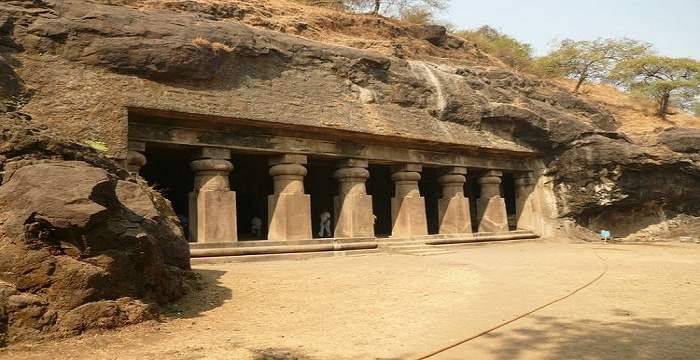
These caverns were excavated between the 400-800AD. The buildings feature imagery from famous Hindu epics including the Mahabharata and the Ramayana.
- The Jain caves
The oldest period of Jain cave building is difficult to pinpoint, however it is typically dated to the sixth and twelfth centuries AD.
These caves display ornate carvings which serve as illustrations for Jain Pantheon Tirthankara stories. Several Jain caves, like those at Ellora in Maharashtra and Sittanavasal in Tamil Nadu., have intricately painted ceilings.
The walls of caves located in several of areas of Madhya Pradesh, Uttar Pradesh, Andhra Pradesh, Karnataka, and Bihar preserve remnants of rock paintings. In Uttarakhand’s Kumaon Hills, there have been reports of some paintings as well. These ancient murals may be found on the rock shelters at Lakhudiyar, which are situated along the banks of the River Suyal and are about twenty kilometres from Almora and Barechina. Literally, Lakhudiyar means “one lakh caves.” Three types of paintings may be seen here: paintings of people, animals, and geometric patterns in white, black, and red ochre. The human figure is shown as sticks.
The Lomus Rishi cave is a rock-cut cavern located in the Barabar hills, close to Gaya, Bihar. The semicircular chaitya arch serves as the entrance and decorates the cave’s face. On the chaitya arch’s high relief-carved elephant frieze, there is a lot of movement. There is a circular room towards the back of the rectangular internal hall of the cave. The hallway’s side wall is where the entrance is situated. Ashoka patronised the cave on behalf of the Ajivika sect.

All these magnificent caves from the prehistoric and mediaeval times provide us a glimpse of many architectural styles from various historical eras and religions. The artefacts, motifs, paintings, murals, and sculptures of the caves not only provide us with a wealth of historical information and a glimpse into the diverse traditions, customs, and lifestyles of the time, but they also demonstrate impressive feats of structural engineering and artistry, drawing in tens of thousands of visitors and architectural enthusiasts every year.
